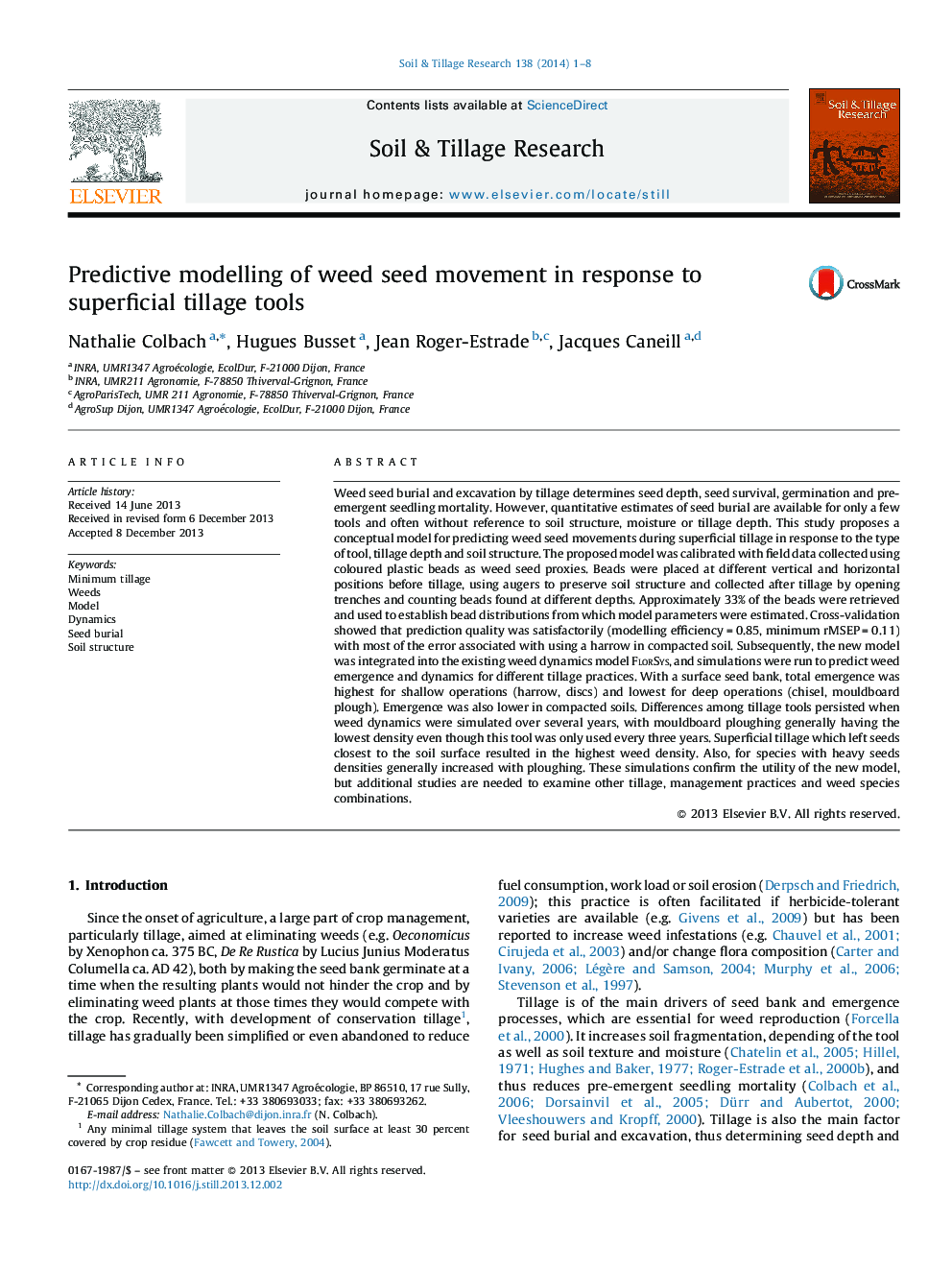| کد مقاله | کد نشریه | سال انتشار | مقاله انگلیسی | نسخه تمام متن |
|---|---|---|---|---|
| 305762 | 513049 | 2014 | 8 صفحه PDF | دانلود رایگان |
• Tillage buries weed seeds, which increases seed persistence and decreases emergence.
• A generic model was developed to predict weed seed burial during superficial tillage.
• The model was calibrated and cross-validated successfully on a field trial.
• It was integrated into the weed dynamics model FlorSys and simulations were run.
• Shallow and simple tillage increased weed densities except for heavy-seeded species.
Weed seed burial and excavation by tillage determines seed depth, seed survival, germination and pre-emergent seedling mortality. However, quantitative estimates of seed burial are available for only a few tools and often without reference to soil structure, moisture or tillage depth. This study proposes a conceptual model for predicting weed seed movements during superficial tillage in response to the type of tool, tillage depth and soil structure. The proposed model was calibrated with field data collected using coloured plastic beads as weed seed proxies. Beads were placed at different vertical and horizontal positions before tillage, using augers to preserve soil structure and collected after tillage by opening trenches and counting beads found at different depths. Approximately 33% of the beads were retrieved and used to establish bead distributions from which model parameters were estimated. Cross-validation showed that prediction quality was satisfactorily (modelling efficiency = 0.85, minimum rMSEP = 0.11) with most of the error associated with using a harrow in compacted soil. Subsequently, the new model was integrated into the existing weed dynamics model FlorSys, and simulations were run to predict weed emergence and dynamics for different tillage practices. With a surface seed bank, total emergence was highest for shallow operations (harrow, discs) and lowest for deep operations (chisel, mouldboard plough). Emergence was also lower in compacted soils. Differences among tillage tools persisted when weed dynamics were simulated over several years, with mouldboard ploughing generally having the lowest density even though this tool was only used every three years. Superficial tillage which left seeds closest to the soil surface resulted in the highest weed density. Also, for species with heavy seeds densities generally increased with ploughing. These simulations confirm the utility of the new model, but additional studies are needed to examine other tillage, management practices and weed species combinations.
Figure optionsDownload as PowerPoint slide
Journal: Soil and Tillage Research - Volume 138, May 2014, Pages 1–8
